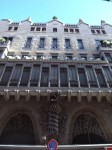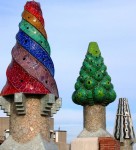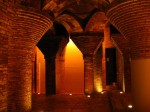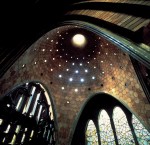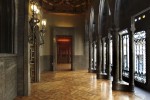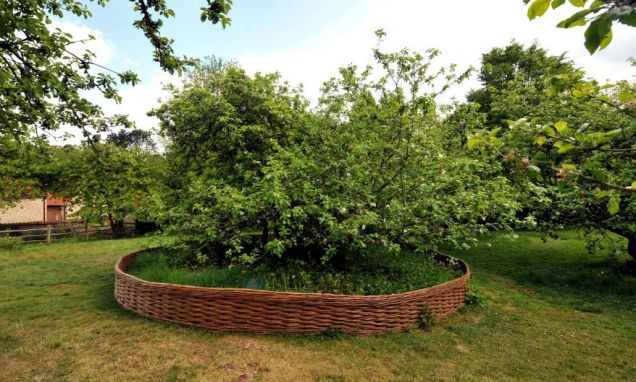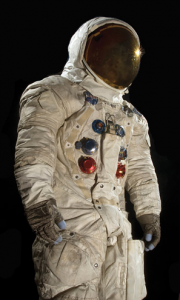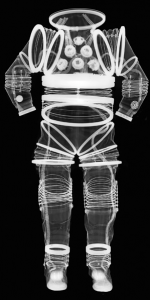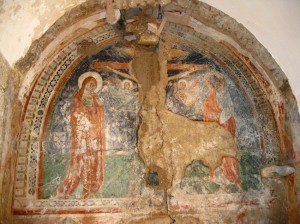An 8 aurei gold medallion minted in 308 A.D. during the reign of the Emperor Maxentius sold at auction for $1,407,550 (1.3 million Swiss francs). That’s a new world record public auction price for a Roman gold coin. (We can’t say for sure that it’s the highest price ever paid because of private sales, which of course don’t announce what kind of money changed hands.)
The coin is extremely rare, one of only two known to be in existence, and it’s in extraordinarily great condition. It’s so deeply struck and so pristine it looks like one of those goofy commemoratives they sell on infomercials, only, you know, not goofy. Or commemorative.
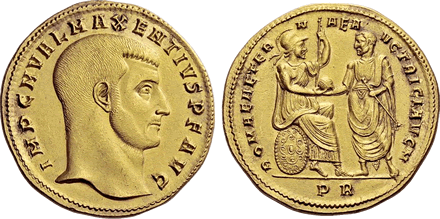
That handsome profile with the unbelievably detailed hair on the obverse side of the coin is the Emperor Maxentius. On the reverse is the deified spirit of Roma sitting on a shield and handing Maxentius, who stands before her wearing a toga and holding a scepter, a globe. This medallion would not have been a coin in regular circulation, but rather a special minting of presentation pieces.
The gold medallion offered here is among the largest to survive, weighing eight aurei, and was part of cache no doubt intended for distribution to Maxentius’ military officers. High-profile items like this were a perfect medium for reinforcing his ideals among the men who were in the best position to support or to betray him.
The patriotic reverse represents Maxentius as the one charged by Roma herself to deliver the capital from the degradations threatened by Galerius. The inscription “to Eternal Rome, guardian of our emperor” speaks volumes of how Maxentius presented his case for sustaining the rebellion. On the obverse, Maxentius portrays himself bareheaded at a time when all of his contemporaries are crowned, and on the reverse he wears the robes of a senator. Every aspect of this must have been carefully considered in the hope that the recipient of this medallion would be assured that Maxentius did not rule as a despot, but humbly, and at the behest of Roma herself.
The golden propaganda didn’t work. Maxentius only ruled from 306 to 312 A.D., and since Constantine controlled most of his father’s (the Emperor Constantius) army and the Caesar Severus was firmly ensconced in northern Italy, Maxentius never ruled more than central and southern Italy. In 312 Constantine took that small part forcibly by defeating him in the Battle of the Milvian Bridge.
This battle has gone down in history because it’s where Constantine first took the field under the banner of Christ, either the Christian symbol of the Chi-Rho (☧) on the Labarum banner, or with crosses inscribed on the soldiers’ shields. As Eusebius tells it, Constantine had a vision of the cross when he looked up at the sun one day. Above the cross was written in Greek, “In this sign, conquer.” The next night Christ came to him in a dream and explained that if he carried a Christian standard, he would defeat his enemies and win the empire.
